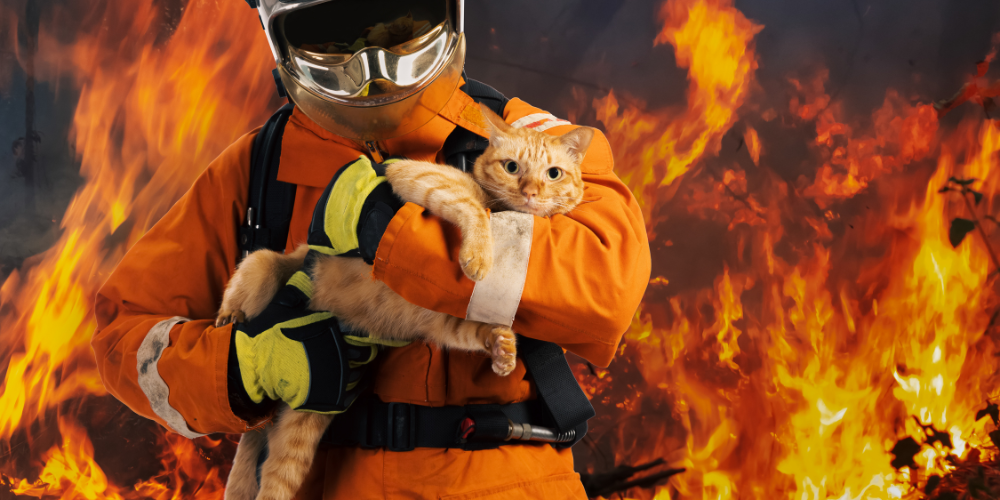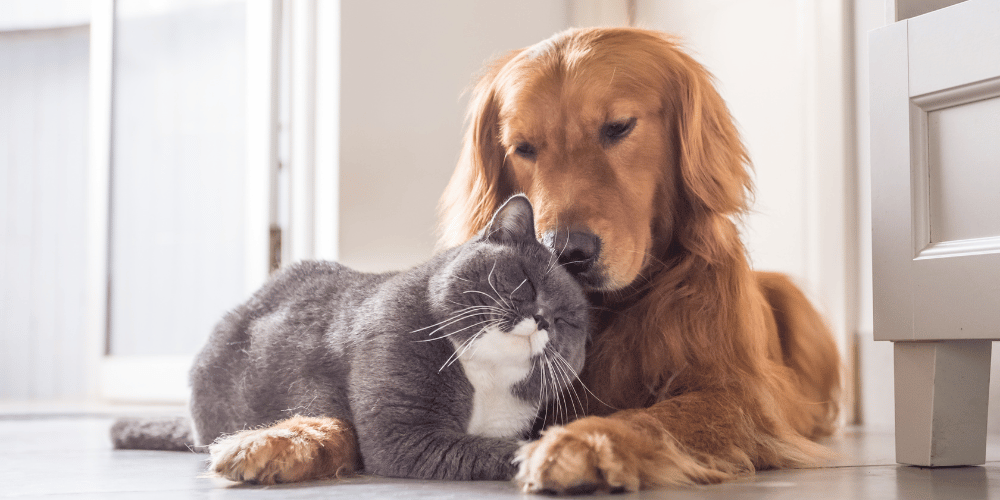
We all adore our furry, feathered, and finned friends, don't we? But let's paw-se for a moment and think about their safety during emergencies like bushfires or floods. Our pets rely on us for their well-being, so let's ensure they're as prepared as we are. Here's your go-to guide for creating an emergency pet plan with a whisker of fun and a ton of love!
Let's Plan Ahead, Fur-real!
Craft a Purr-fect Emergency Plan: Brainstorm with your family or housemates about disasters that might affect your adorable critters. Record your plan, practise it, and display it somewhere obvious – like your fridge or front door.
Water: Always have a few days' supply of water for your pets. And remember, no tipping! Make those water containers spill-proof.
Backup: Appoint a trustworthy neighbour, family member, or friend to help your pets if you can't. Make sure they're comfortable with your pets and have your contact info and a key to your place.
Temporary Housing: Create a list of boarding kennels, catteries, or animal shelters (or maybe a pet-loving friend) who can care for your pets during an emergency.
ID, Please! Ensure your pets have a collar, council registration tag, and a microchip. Keep your contact info updated with the local council and the microchip registry.
Vaccination Validation: Keep your pet's vaccinations up-to-date, and have those certificates handy. You never know when they might need to bunk at a boarding facility.
Emergency Kit Essentials
Imagine this: You've got minutes to evacuate. Your pet looks up at you with those “I trust you” eyes. What do you grab? A pet emergency kit!
Here's what to pack:
- Food and water for at least three days.
- Leads and chains for dogs.
- Appropriate cages or carriers for smaller buddies (think cats, birds, guinea pigs).
- An info list with your details, pet's description, and care requirements.
- First aid items, essential meds, and medical history.
- Comfort items like blankets, towels, and bedding.
- Registration and licensing records.
- Litter for cats and small animals.
Keep this kit somewhere grabbable!
Evacuating with Your Furry Friends
Leave Early: In bushfire zones, leaving early is the safest bet.
Storm and Flood Awareness: Be ready to act fast as weather can change quickly.
Work Days: Consider relocating your pets before you head out.
Keep Them Inside: On risky days, don't let your pets roam unsupervised.
Travel with Care: Never leave pets in cars. Carry fresh water for them.
When Pets Must Stay Behind
If you can't take your pets along:
- Leave them in a secure indoor area.
- Provide ample water (10 days' worth) and dry food (4-5 days).
- If flooding is a risk, ensure they have access to high spots.
After the Emergency
Seek veterinary help for any injuries.
If your pet is lost, contact local authorities, shelters, and use social media.
Checklist
- Include pets in your emergency plan.
- Ensure ID tags, microchips, and vaccinations are up-to-date.
- Have an emergency kit ready.
- Plan your evacuation spot and routes.
- If pets are left behind, ensure they have water and food.
Remember, your pets count on you to keep them safe. With a little planning, we can make sure our beloved animal companions are protected in emergencies. Stay paws-itive and prepared!


